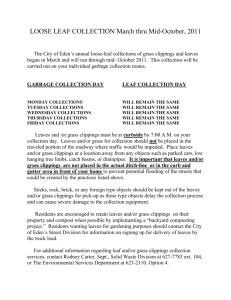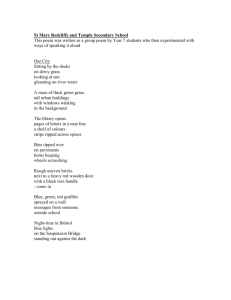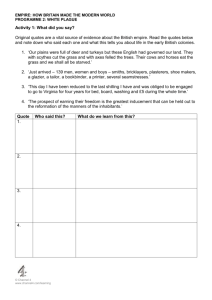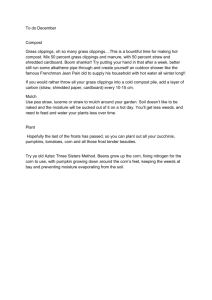Net Primary Productivity
advertisement
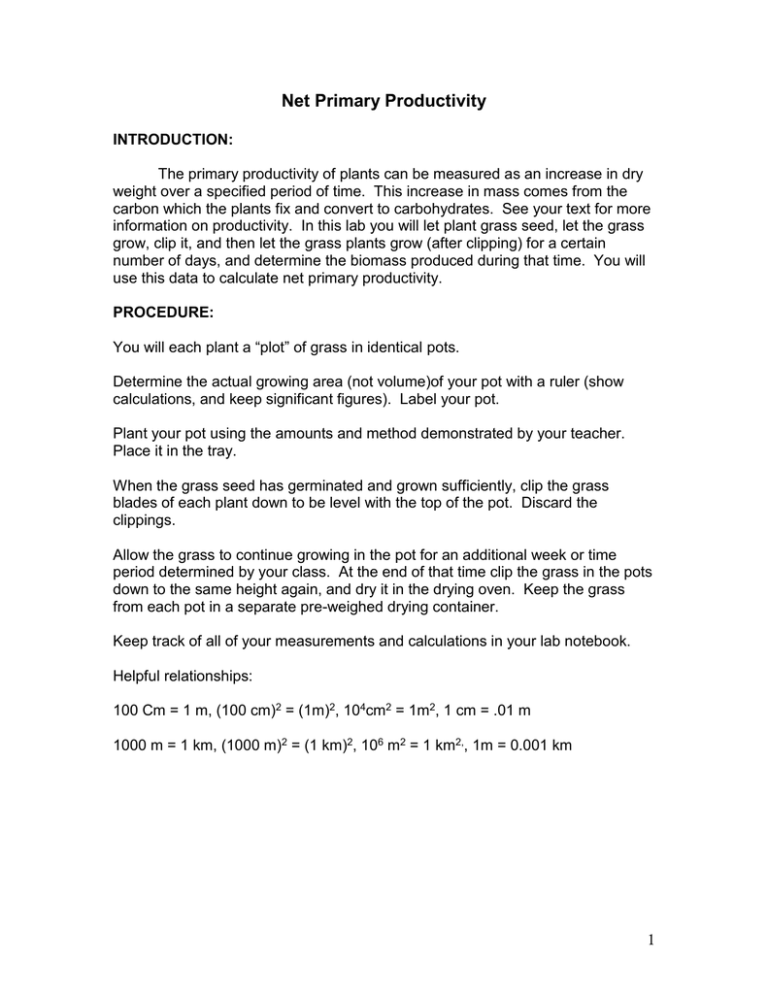
Net Primary Productivity INTRODUCTION: The primary productivity of plants can be measured as an increase in dry weight over a specified period of time. This increase in mass comes from the carbon which the plants fix and convert to carbohydrates. See your text for more information on productivity. In this lab you will let plant grass seed, let the grass grow, clip it, and then let the grass plants grow (after clipping) for a certain number of days, and determine the biomass produced during that time. You will use this data to calculate net primary productivity. PROCEDURE: You will each plant a “plot” of grass in identical pots. Determine the actual growing area (not volume)of your pot with a ruler (show calculations, and keep significant figures). Label your pot. Plant your pot using the amounts and method demonstrated by your teacher. Place it in the tray. When the grass seed has germinated and grown sufficiently, clip the grass blades of each plant down to be level with the top of the pot. Discard the clippings. Allow the grass to continue growing in the pot for an additional week or time period determined by your class. At the end of that time clip the grass in the pots down to the same height again, and dry it in the drying oven. Keep the grass from each pot in a separate pre-weighed drying container. Keep track of all of your measurements and calculations in your lab notebook. Helpful relationships: 100 Cm = 1 m, (100 cm)2 = (1m)2, 104cm2 = 1m2, 1 cm = .01 m 1000 m = 1 km, (1000 m)2 = (1 km)2, 106 m2 = 1 km2,, 1m = 0.001 km 1 DATA: (give units for all measurements!) Mass of grass seed planted _________________, Date Planted __________ Date Trimmed first time_______ Date trimmed second time_________ Dimensions of pot _________________ Weight of weighing container ________________ Weight of dish + clippings after drying ____________ Biomass of clippings _____________ PRODUCTIVITY CALCULATIONS: show your work and keep the correct # of significant digits throughout. Use scientific notation. Use your data to do the calculations. Biomass of clippings Time period (days) Biomass gained per day kcal gained per day* Area of pot in cm2 Area of pot in m2 ** Area of pot in km2 Net productivity (kcal/day/square meter) Class average for net productivity *There are 3.6 kcal/gram dry weight **Hint: use unit analysis to do conversions, ask Mrs. Soos if you need help with this! Show your work for all calculations, use scientific notation, and include units. 2 DISCUSSION/CONCLUSION: 1. Define net productivity and gross productivity. 2. Why are the results of this lab expressed as “net productivity” rather than “gross productivity”? 3. Taking your own productivity calculation, use it to calculate the net productivity for a grassland composed of your grass plants over a 12-week summer period. Assume the grassland is one square kilometer. (Hint: apply your knowledge of dimensional analysis you learned in chemistry to keep track of your units. This is the same sort of process you used to convert cm2 to m2.) Show your work. 4. Repeat your calculations for the average biomass of clippings for the entire class. 5. Compare your calculations to the data in the book for grassland productivity. What is the % difference between your data and that given in the book? (Show your work.) What is the difference between the class data and that given in the book? % difference = (accepted value - your value) X 100 accepted value BONUS: Propose a method to measure grass gross productivity in this lab. 3


